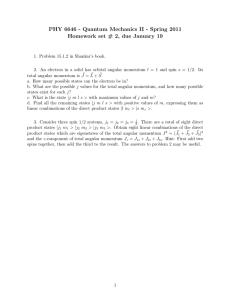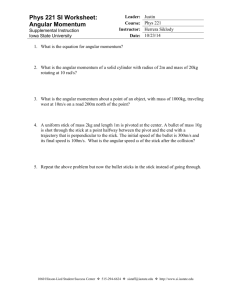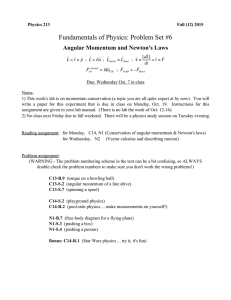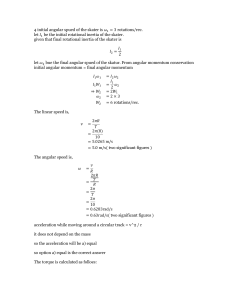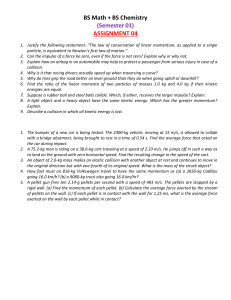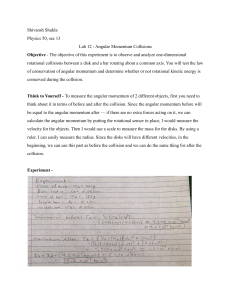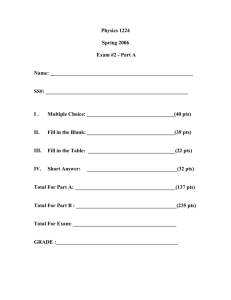Physics I – Exam 2 – Fall 2005 Answer Key
advertisement
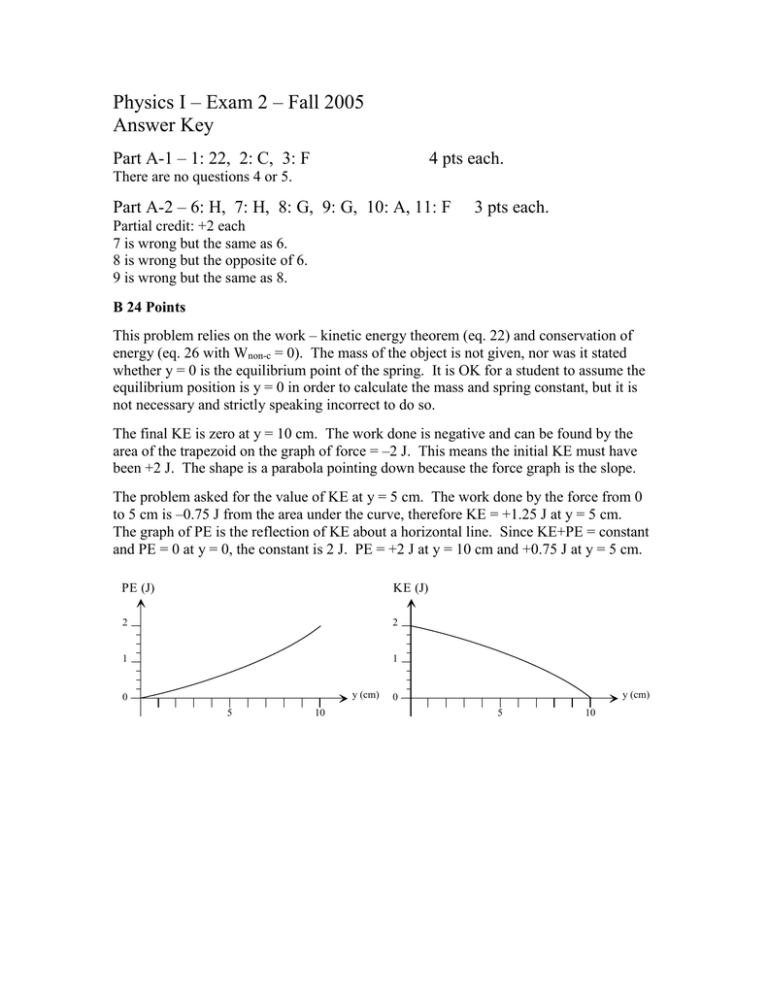
Physics I – Exam 2 – Fall 2005 Answer Key Part A-1 – 1: 22, 2: C, 3: F 4 pts each. There are no questions 4 or 5. Part A-2 – 6: H, 7: H, 8: G, 9: G, 10: A, 11: F 3 pts each. Partial credit: +2 each 7 is wrong but the same as 6. 8 is wrong but the opposite of 6. 9 is wrong but the same as 8. B 24 Points This problem relies on the work – kinetic energy theorem (eq. 22) and conservation of energy (eq. 26 with Wnon-c = 0). The mass of the object is not given, nor was it stated whether y = 0 is the equilibrium point of the spring. It is OK for a student to assume the equilibrium position is y = 0 in order to calculate the mass and spring constant, but it is not necessary and strictly speaking incorrect to do so. The final KE is zero at y = 10 cm. The work done is negative and can be found by the area of the trapezoid on the graph of force = –2 J. This means the initial KE must have been +2 J. The shape is a parabola pointing down because the force graph is the slope. The problem asked for the value of KE at y = 5 cm. The work done by the force from 0 to 5 cm is –0.75 J from the area under the curve, therefore KE = +1.25 J at y = 5 cm. The graph of PE is the reflection of KE about a horizontal line. Since KE+PE = constant and PE = 0 at y = 0, the constant is 2 J. PE = +2 J at y = 10 cm and +0.75 J at y = 5 cm. PE (J) KE (J) 2 2 1 1 y (cm) 0 5 10 y (cm) 0 5 10 Part C Must show work to receive credit. C-1 22 points This is a combination rotation and Newton’s 2nd Law problem. The equation of motion for the spool is = I . The equation of motion for the hanging mass is m g – T = m a. These are related through a = r and = r T. Convert the rotation equation to r T = I a / r or T = I a / r2. Then put T back into the equation for hanging mass and get m g – I a / r2 = m a or a = m g / (m + I / r2) or a = g/2 = 4.9 m/s2. C-2 24 points Use Conservation of Angular Momentum. Angular momentum in this problem is in the +Z direction (out of the page) and so we only need to worry about magnitudes. Before the collision, the angular momentum of the bullet = r m v sin() = 1.35 kg m2/s. After the collision, the angular momentum is L = I kg m2/s. We need to calculate I (rotational inertia) to get . The total I is due to the rod, a block on one end, a block on the other end, and the bullet in one of the blocks. The rotational inertia of the rod is given by the formula. For the other objects, we are told they are point masses and so we use I = mi ri2 for them. I = (1/12)(.24)(.5)2 + (0.05)(.25)2 + (0.05)(.25)2 + (0.0065)(.25)2 = 0.0117 kg m2. Then = 1.35 / 0.0117 = 116 rad/s.



